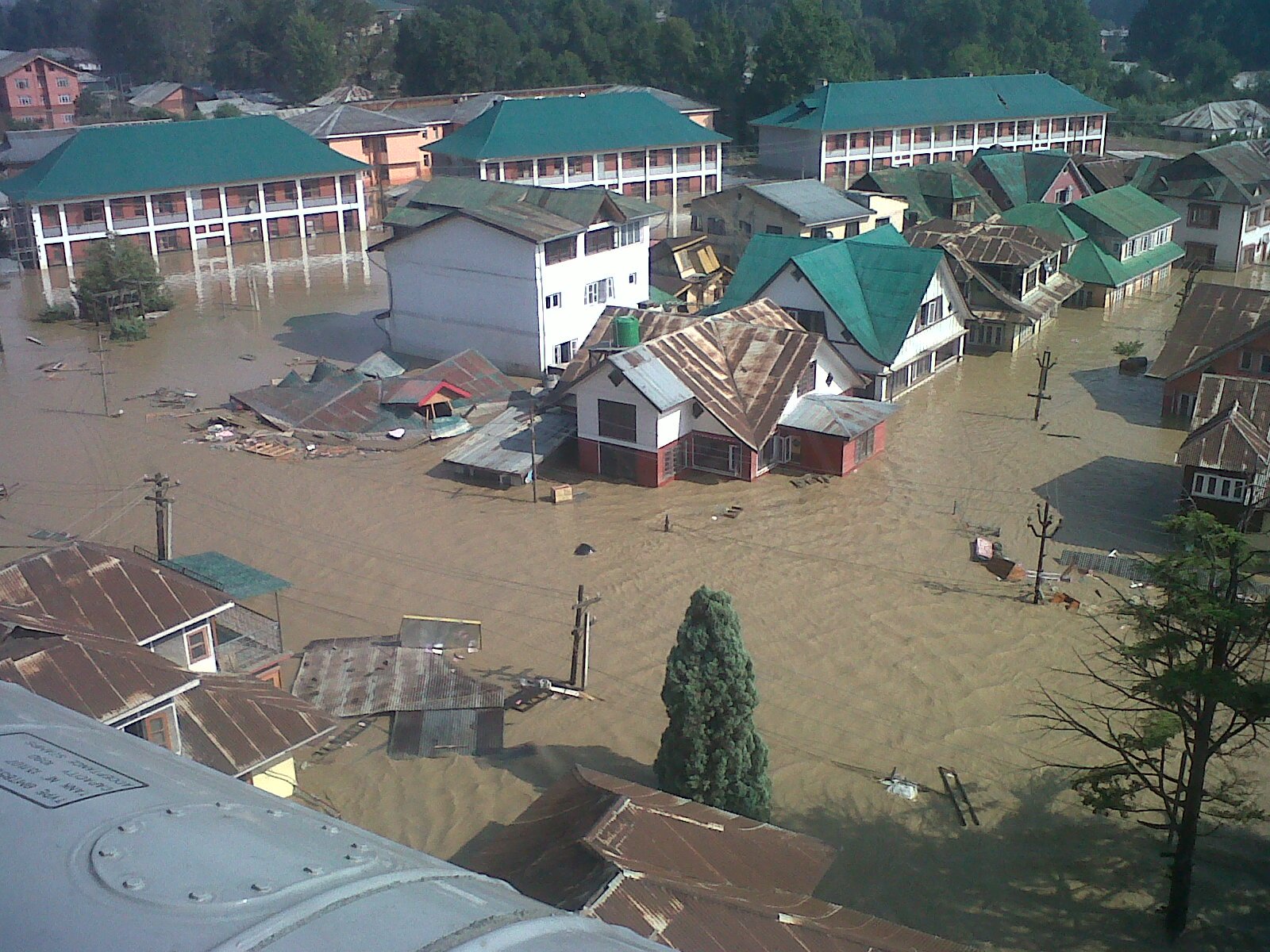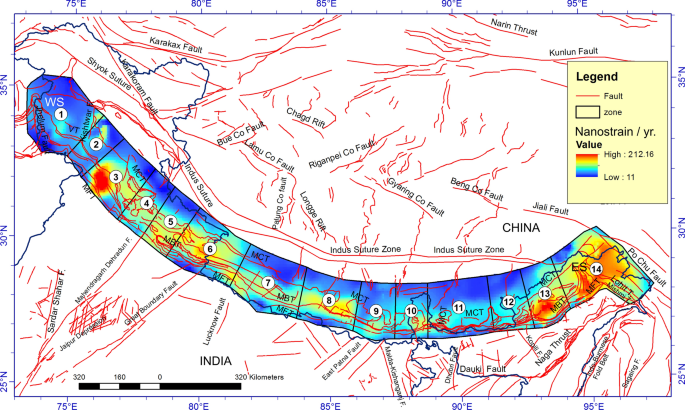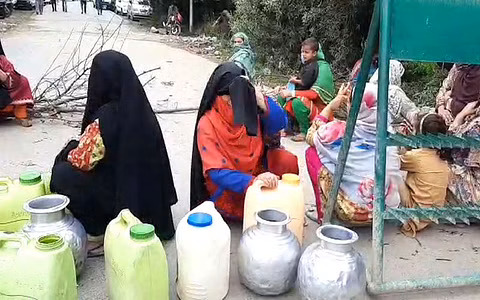Rapid urbanization in Kashmir, encroachment of water bodies and adjoining river banks and disappearance of wetlands have disrupted the natural drainage patterns
By: Khurshid Ahmed Ganai
The recent report of the National Institute of Disaster Management (NIDM) has called for taking more corrective measures to prevent 2014 flood-like disasters. The report has mentioned ‘haphazard developmental activities and infrastructure projects being implemented without sufficient consideration of environmental safety and sustainability.’
The report has also pointed out that ‘the developmental activities are carried out with little regard for environmental, geological, geomorphological and ecological conditions of the region’ and that ‘the ongoing construction boom, fueled by indiscriminate mining of sand, gravel and boulders from riverbeds weakens the existing flood control infrastructure making the rivers more susceptible to flash floods.’
The report mentions that rapid urbanization in Kashmir, encroachment of water bodies and adjoining river banks and disappearance of wetlands have disrupted the natural drainage patterns.
By way of corrective measures the report has called for construction of an alternate flood channel, improvement of the drainage system in urban areas, restoration of natural drainage in Jhelum basin, conservation and restoration of degraded wetlands in Jhelum basin, sewage treatment and city and town planning from the point of view of floods and earthquakes.
CSE has also said that ‘ in the last 100 years, more than 50 percent of the lakes, ponds and wetlands of Srinagar have been encroached upon for constructing buildings and roads.
The banks of river Jhelum have been taken over in a similar manner, vastly reducing the river’s drainage capacity. Naturally, these areas have suffered the most.’
CSE had also observed, ‘ the Kashmir floods of 2014 are a grim reminder that climate change is now hitting India harder. In the last 10 years, several extreme rainfall events have rocked the country and this is the latest calamity in that series.’
Status of Flood Control Measures
Barring the project prepared for improvement of the carrying capacity of the existing flood spill channel in Srinagar, not much by way of other measures has been done. This project was phase 1 of the Flood Management Plan (FPM) costing about 399 crore. The phase 2 of FPM costing about 1600 crore is reportedly still unfunded. This however does not include the proposed alternate flood spill channel (Dogripora to Wullar) which, as of now, is non-doable due to very huge cost including cost of land acquisition. Some works under phase 2 have reportedly been started.
In this scenario, barring a few thousand cusecs more of flood water that may get drained out through the improved flood spill channel, there would hardly be any decrease in the extent of devastation if similar rainfall, as in 2014, is experienced in the south Kashmir catchment areas causing a discharge of over one lakh cusecs in river Jhelum on entry into Srinagar.
Flood protection works executed by the department in the valley since 2014 would generally have only localised impact to provide protection in the local area.
Unplanned Development
Unplanned development has been the bane of urbanization in Kashmir and also of rural expansion. The biggest culprit is construction of residential houses in an unplanned way. Only Srinagar, Pahalgam, Gulmarg, Sonamarg and possibly the new Tourism Development Authorities (TDAs) have master plans; most of rest of the towns don’t have.
Despite a master plan in Srinagar for the last over 40 years, the city has expanded in all directions in violation of zonal and land use plans causing mushroom growth of unauthorized colonies. In the absence of master plans and land use plans for other towns, construction has been taking place in the most haphazard manner everywhere devouring valuable agriculture land.
Although the residential houses being built are big and expensive, their construction is environmentally destructive, needing lots of stone, sand, cement, iron, timber and materials whose extraction and manufacture by itself is environment unfriendly and polluting.
The local engineers have failed to provide alternative weather friendly and material friendly architectural designs for construction of residential houses in Kashmir. Unplanned construction prevents provision of satisfactory civic amenities like internal roads, lanes and drains which in turn result in sanitation problems and frequent water logging.
Jammu and Kashmir has long neglected urban and rural land use planning and, barring exceptions in Jammu, Srinagar and a few major towns where some government authorized residential colonies have come up over the years, has no system in place to authorize construction of residential houses in identified and specifically earmarked colonies. Although prior permission for construction is required to be obtained under relevant laws in both urban and rural areas, there is no enforcement of the land use in the absence of land use plans.
This is also leading to large scale diversion of agriculture land for construction which if not prevented will soon transform the valley of Kashmir into a chaotic concrete jungle with no land left for growing paddy or vegetables or fruit or flowers, a tragic scenario for Kashmir, the Jannat-e-Benazir and Switzerland of the East, whose God given natural beauty is still part of the folk lore.
There is need for implementation of Real Estate (Regulation and Development) Act, 2016 (RERA) in Jammu and Kashmir, as the central law now stands extended but in the absence of a duly constituted RERA, implementation is perhaps not happening. A functional RERA will expectedly force the Municipal and Development Authorities to prepare land use plans for residential colonies and commercial centres and also implement those.
The NIDM report has mentioned about the problem of encroachments on river banks, water bodies and wetlands resulting in blocking of natural drainage and consequent flooding.
The CSE report mentions about loss of 50 percent of water bodies over the last hundred years due to encroachments. As of now Aanchar lake is almost gone, Wular lake (a Ramsar convention site) and Manasbal lake are fast shrinking, Hokersar wetland (Ramsar site) is struggling to stay afloat and Hygam wetland (Ramsar site) has reportedly turned into a marsh and been encroached by the locals for agriculture and construction.
Banks of river Jhelum and its major tributaries like Lidder, Brengi, Sandran, Vaishav, Rambiara,, Romsho, Ferozpur Nallah, Sindh etc have also been encroached at many places resulting in narrowing down of water passage, siltation and blocking of adjacent low lying areas into which flood water would otherwise spill over in the event of river in spate.
Within Srinagar city, Dal lake and Nigeen lake are managing to stay alive while Brarinambal is dying. Khushalsar has been sufficiently revived thanks to the efforts of that tireless conservation activist Sh. Manzoor Ahmed Wangnoo and his Nigeen Lake Conservation Organisation (NLCO), the district administration of Srinagar and the divisional administration.
Revival of the adjacent Gilsar waterbody is reportedly in the pipeline by the same team. Jhelum banks and the banks of khuls of the Jhelum system in Srinagar city are already encroached and contnuously facing threat of encroachment. It is high time that the entire river and lake systems within Srinagar city are brought under the control of a single authority namely Lakes Conservation and Management Authority (LCMA) which may be rechristened as the Lakes and River Conservation Management Authority (LRCMA) to do away with the present system of dual control by LCMA and Irrigation and FC deptt. This restructuring would need strengthening of LCMA through transfer of posts, budget, equipment and machinery and sanction of additional manpower of engineers and experts.
Challenges thrown by the Forest (Conservation) Amendment Act, 2023
The new Forest ( Conservation) Amendment Act, 2023 has relaxed the provisions of the original Central Act of 1980 to facilitate diversion of forest areas for important development activities and for raising strategic linear projects of national importance and security related infrastructure.
Before the August 2019 changes, J&K had its own Forest Conservation Act of 1987 which had rather strict provisions to prevent diversion of forest land for non-forest purposes. Its rules prescribed a strict and centralised administrative process for giving clearances for use of forest land for non- forest purposes and for felling of forest trees.
That Act stands repealed and replaced by the Central Act of 1980. The amendments of 2023 have thrown new challenges for J&K, the Himalayan states and the North Eastern states having international border or line of control (LOC) as forests located within 100 kms from the International Border (IB), LOAC and LOC have now been exempted from the application of the provisions of the Forest Act, 1980 when raising strategic linear projects of national importance, defence related projects or a camp for paramilitary forces or public utility projects as may be specified by the central government and up to ten hectares when raising security related infrastructure.
Although, the amendment Act says that the exemption shall be subject to such terms and conditions of planting trees to compensate for felling of trees undertaken on the lands, the real impact of these exemptions and changes will be seen in the next few years. For now, many forestry experts and environmentalists in the country have been critical of the amendments for according such blanket and unprecedented exemptions. Moreover, the amendments have also been criticised for excluding certain othe categories of forests from the application of the provisions of the Act, apparently against the spirit of Supreme Court’s Godavarman judgement of 1996.
The UT government will need to estimate the likely impact of the amendments over the next 5 to 10 year time frame and prepare reafforestation and repair plans to compensate for the impact and the damages.
The experts and environmentalists have cautioned that the relaxations allowed by the amendments of 2023 will open up rich and deep forests to various types of activities thereby endangering the forests themselves, the biodiversity and the livelihood of people who are dependent on forest produce. Environmentalists have also raised red flags in respect of the amendments in the Biological Diversity Act with the passage of the Biodiversity (Amendment) Bill, 2021.
Although, J&K has been registering increased tree cover year after year during the last decade or so, this increase, creditable though, is largely due to social forestry undertaken by the government departments and local people themselves outside the demarcated forests and also due to conversion of agriculture land into orchards in Kashmir division. The coniferous forests in Jammu and Kashmir within the demarcated forests are in a state of decline and if no special efforts are made for reafforestation of coniferous forests, the glaciers, mountain lakes, streams and rivulets and nallahs will soon wane and dry up resulting in acute water shortages during summer with serious implications for agriculture and drinking water availability.
The forest department in Jammu and Kashmir must not pat itself by the achievements of plantations outside the forest areas or even non-coniferous plantations within demarcated forest areas, its real test lies in reafforestation of coniferous forests to compensate for past deforestation and future deforestation consequent upon the new amendments.
Need to educate the common people about the dangers of damage to our environmental assets and natural resources
Unfortunately, there has always been unwillingness among the people in Jammu and Kashmir to concern themselves with common community issues in comparison to individual issues. J&K may be one area in the country which has least number of functional and dedicated NGOS working for societal issues and causes. Dependence on government has always been high in comparison with other states.
It is therefore necessary for the more informed ones among us to educate the less informed, about the duty of each one of us to contribute to environmental protection. Protection of environment is also listed as one of the fundamental duties under Article 51A of the Constitution of India and as one of the Directive Principles of State Policy under Article 48A.
The Ministry of Environment, Forest and Climate Change, Government of India has handed a list of 75 life style actions as part of LIFE (life style for environment) which has also been included under India’s Nationally Determined Contributions (NDCs) to the Paris Agreement and United Nations Framework Convention on Climate Change (UNFCC).
We need to make local people understand how adoption of LIFE cannot be delayed any further. The UT government through its various departments has the duty to educate common people about LIFE and encourage them to adopt the same in day today life. It is important to do everything possible to protect and conserve the forests of Jammu and Kashmir for the people of Jammu and Kashmir and their progeny.
And always remember the timeless advice of Nund Reshi ( Shaikh ul Alam) to the people of Kashmir that Ana posh teli yeli van posh – meaning, food will last as long as the forests last. That great saint had understood the linkage way back in fourteenth century AD.






